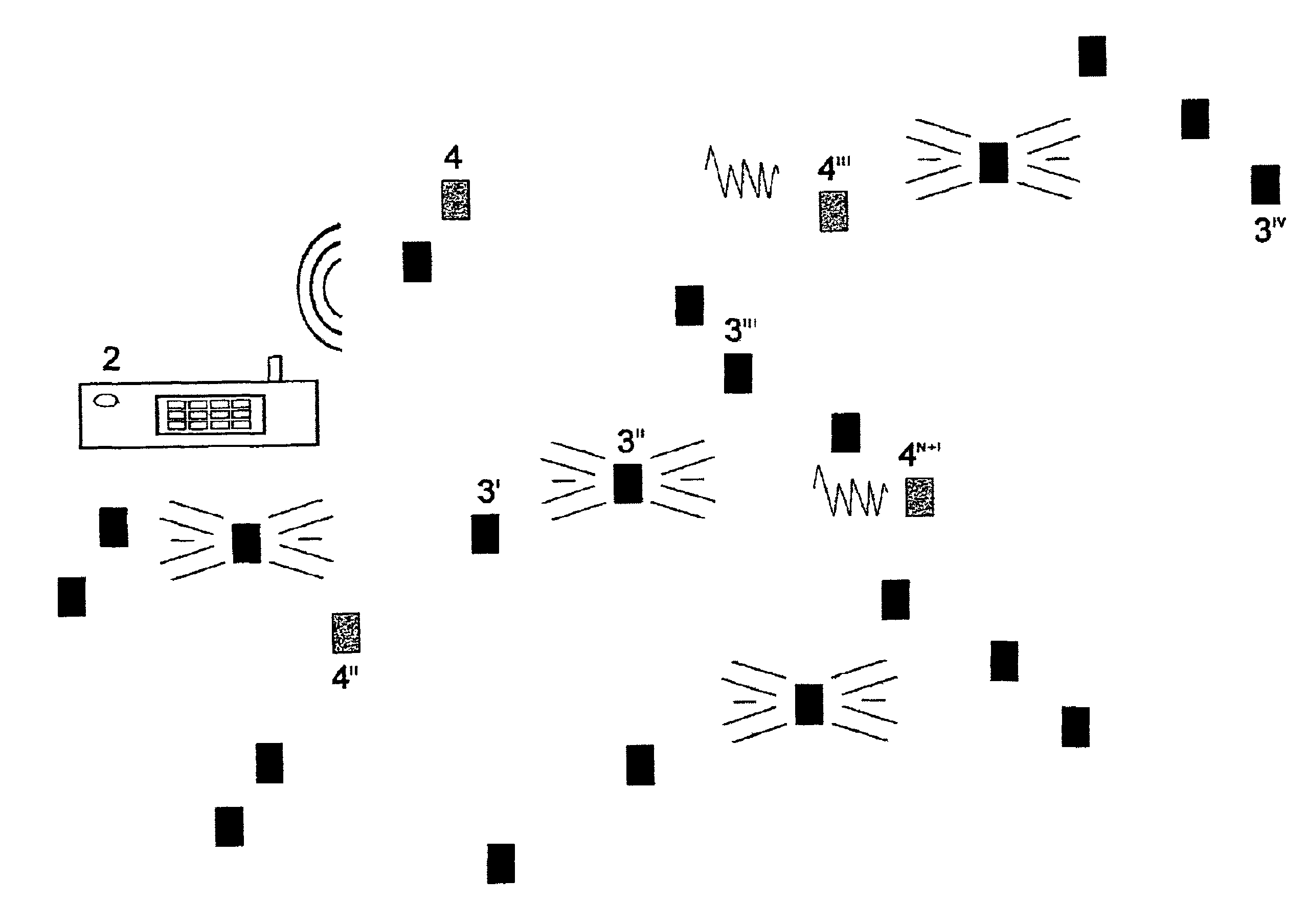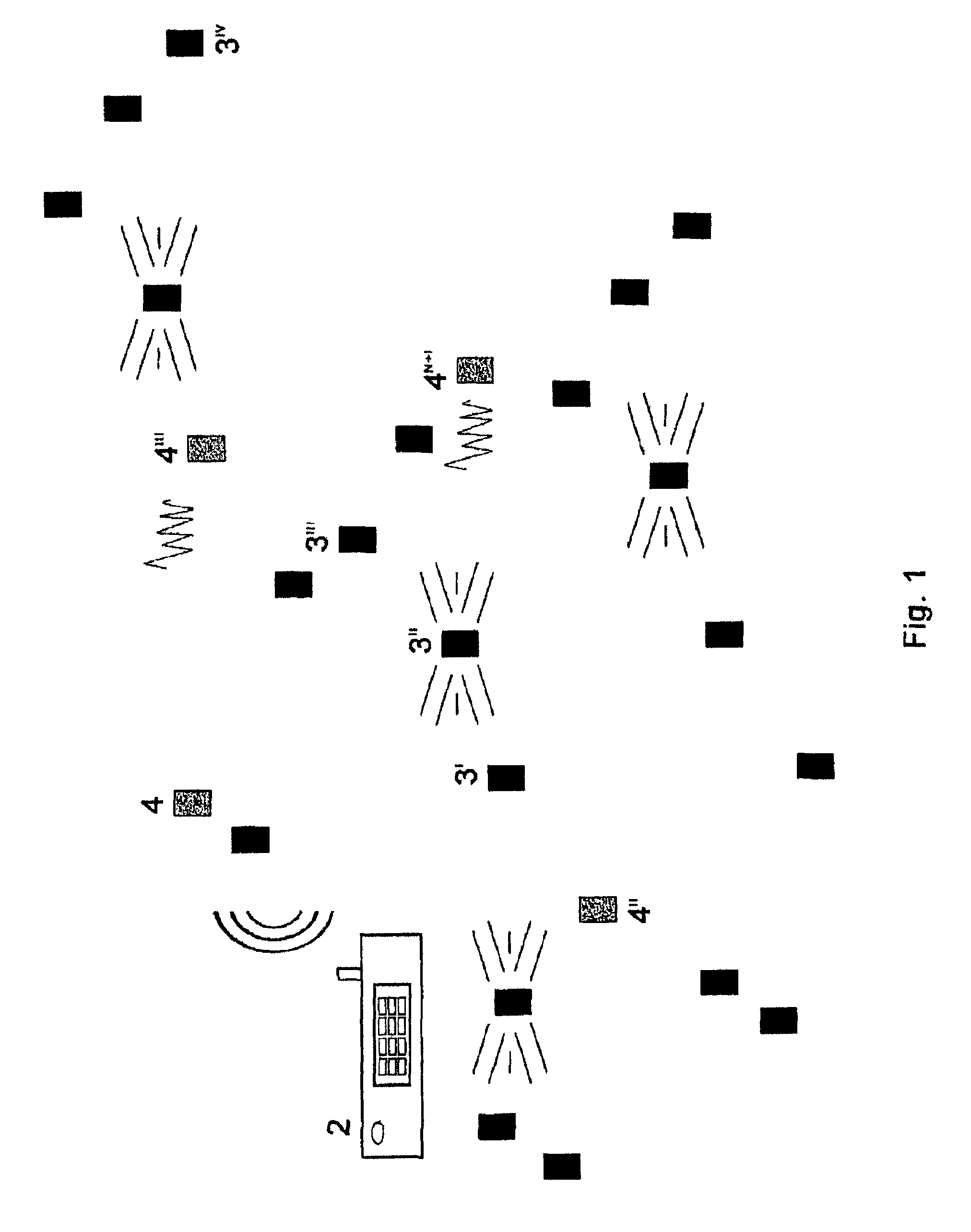Method for localizing remote devices, using acoustical and electromagnetic waves
a remote device and electromagnetic wave technology, applied in the direction of gyroscope/turn-sensitive devices, speed measurement using gyroscopic effects, reradiation, etc., can solve the problems of insufficient accurate knowledge of the position of the node, high cost of solution, and significant increase in the energy consumption of each node. , to achieve the effect of high reliability and immunity
- Summary
- Abstract
- Description
- Claims
- Application Information
AI Technical Summary
Benefits of technology
Problems solved by technology
Method used
Image
Examples
Embodiment Construction
[0016]For the only purpose of more clearly illustrating the invention, but without limiting in this way its applicability and scope, in the following description some specific embodiments will be described by referring to the annexed FIG. 1, the latter showing a schematic representation by functional blocks of the “way of operation” of the present invention.
[0017]The proposed system is based on a network structure in which the whole computational power is concentrated inside the radio base 2 unit, while the localization section for detecting the individual remote devices 3′, 3″, . . . , 3M is extremely simple; in addition, the capability of localizing identical remote devices allows a mass production of remote devices and an enormous reduction of production costs.
[0018]The proposed system can take advantage of the integration on a single chip of: a computing unit with sensors, circuits for conditioning and converting a signal, and a wireless communication electronics, thereby allowi...
PUM
 Login to View More
Login to View More Abstract
Description
Claims
Application Information
 Login to View More
Login to View More - R&D
- Intellectual Property
- Life Sciences
- Materials
- Tech Scout
- Unparalleled Data Quality
- Higher Quality Content
- 60% Fewer Hallucinations
Browse by: Latest US Patents, China's latest patents, Technical Efficacy Thesaurus, Application Domain, Technology Topic, Popular Technical Reports.
© 2025 PatSnap. All rights reserved.Legal|Privacy policy|Modern Slavery Act Transparency Statement|Sitemap|About US| Contact US: help@patsnap.com



